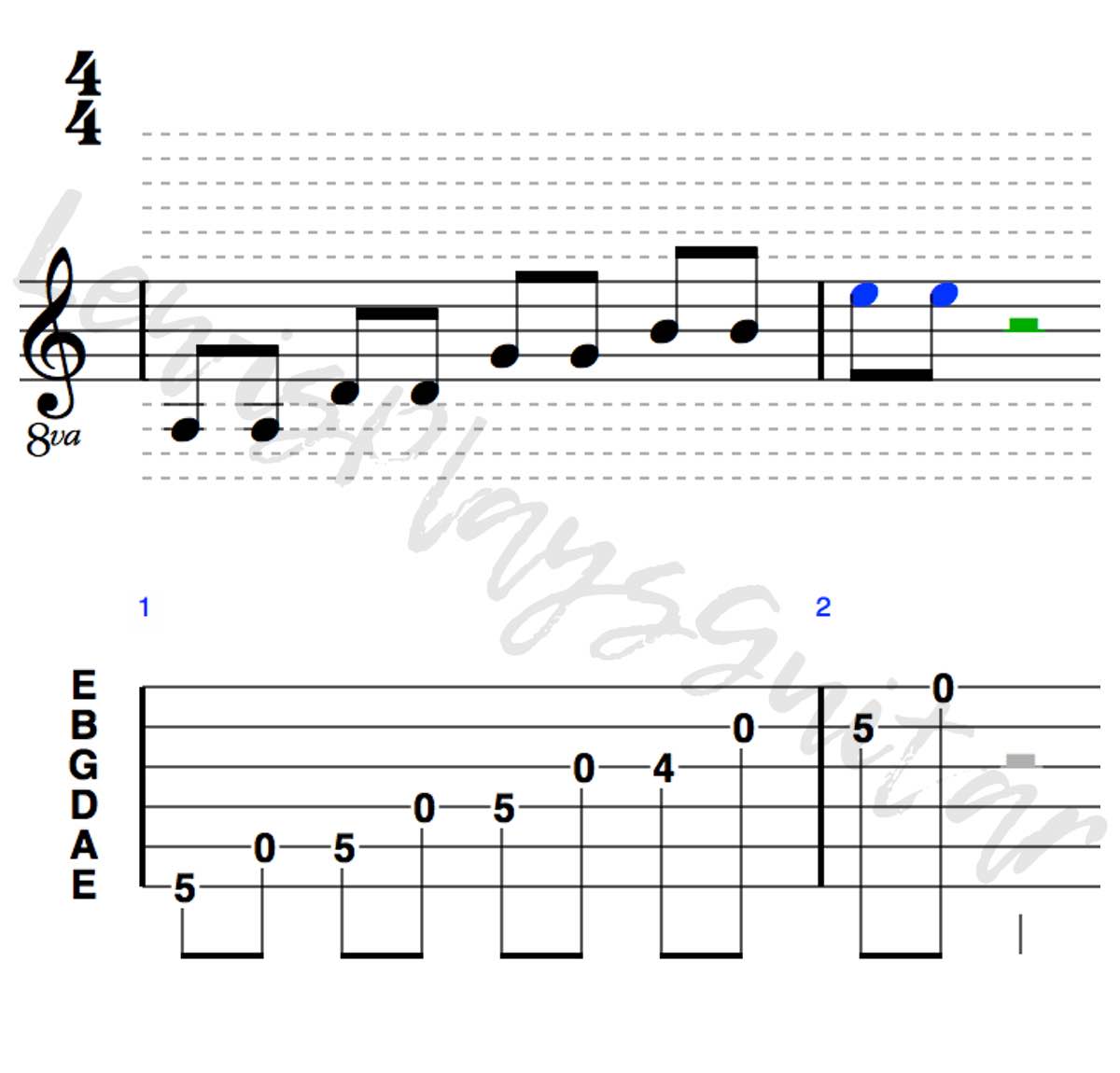Tuning a guitar
Now, every string has it’s own note. But first we need to tune them to their own note.
Tuning is an essential to playing guitar. The standard tuning of a 6 string guitar is (from thickest string to thinnest) is E-A-D-G-B-e. Notice how the highest e is not capitalised. This makes it easier to see the highest and the lowest E string.
There are a few ways to tune your guitar.
Method 1
Tuning is easy with technology. Clip-on tuners are a good example. They clip on to the top of the guitar and can detect notes. You tighten or loosen the string depending on the screen and its as easy as that! There are also pedals that tell you the tuning from the floor, and some guitars even have them built in. There are apps on your smart phone that will tell you the pitch, just make sure it is quiet so it can pick the sound up accurately! You can even use an app on your phone/tablet. I use GuitarTuna as it is quick, easy, and free!

Method 2
I suggest learning to tune by ear. There is a way to check every string is in tune relative to the first note played. If we tune our Low E string to what we think is E, we can the play the 5th fret on the Low E string. The 5th fret should sound exactly the same as the A string below it. You can tune up the A string until they sound the same. We do this again for the A and D string, and continue using fret 5. The only time we need to change frets is for the G and B string. We will need to use the 4th fret on the G string, and that should be the same as the B. Give it a try or check out the video to explain more!
Method 3
Pitch pipes are slowly becoming phased out as technology makes it easier for use to tune out instruments. These effectively work by playing the note and matching the pitch up by ear. Again, there are apps that will play the note and you can match up by ear.
Ideally you will want to learn to use all 3. It’s always handy to have an app for it in case you don’t happen to have a dedicated tuner, but you shouldn't rely on it as their accuracy is not as good as a dedicated tuner, and background noise can make it difficult. Tuning by ear (Method 2) is essential as you may not always have technology to help you.
There are some guitar pitches on this page you can match your tuning to if you are unsure. Try matching your guitar notes to mine and see how close you get! If you are using method 2, use the E to match you pitch first.
The one I suggest to every musician is to tune by ear. There is a way to check every string is in tune relative to the first note played. We play a series of notes (see picture). When you feel the E string is as close as you can get it, follow the notes below and play them both until they sound identical in pitch. Then continue this until they are all done.
If you are unsure how to read this, please see the “Tab and Chord diagrams explained” lesson.